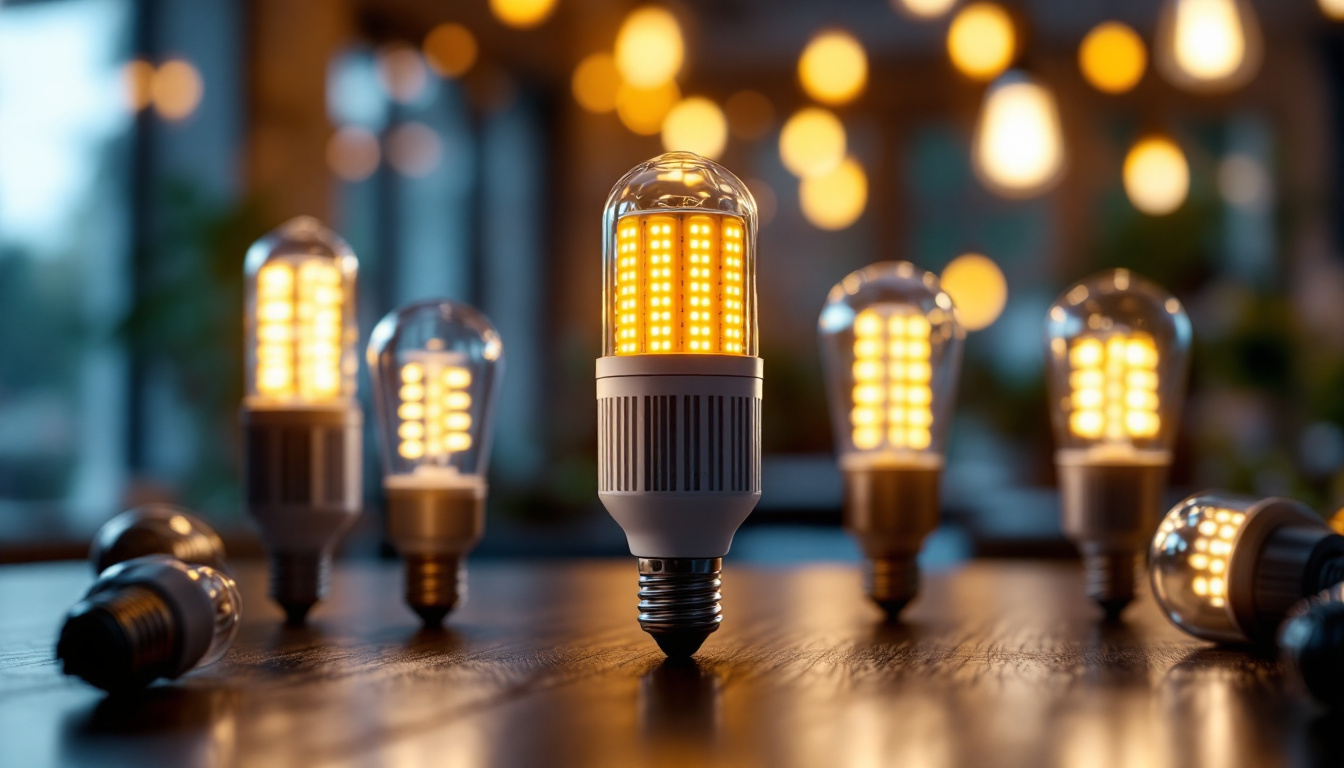
In the ever-evolving world of electrical installations, outlet receptacles play a critical role in ensuring that lighting systems function efficiently and safely. For lighting contractors, understanding the nuances of outlet receptacles is essential not only for compliance with electrical codes but also for enhancing the overall performance of lighting solutions. This article delves into various approaches that smart lighting contractors can adopt when working with outlet receptacles, ensuring optimal results for their clients.
Outlet receptacles, commonly referred to as electrical outlets, serve as the interface between electrical power and the devices that require it. They come in various forms, including standard duplex outlets, GFCI (Ground Fault Circuit Interrupter) outlets, and smart outlets that offer advanced features. Each type of receptacle has its specific applications and benefits, making it crucial for contractors to choose the right one for each project.
There are several types of outlet receptacles available, each designed for different environments and purposes. Standard duplex outlets are the most common, providing two receptacles for general use. GFCI outlets are essential in areas where moisture is present, such as kitchens and bathrooms, as they protect against electrical shocks. Meanwhile, smart outlets integrate technology to allow for remote control and automation, making them increasingly popular in modern homes.
Understanding these types allows contractors to make informed decisions that align with the needs of their clients. For example, in a residential setting, a smart outlet can enhance convenience and energy management, while in a commercial setting, GFCI outlets can ensure safety in high-risk areas. Additionally, there are specialized outlets such as USB outlets that cater to the growing demand for charging devices without the need for bulky adapters, reflecting the shift in consumer behavior towards portable electronics.
Proper installation of outlet receptacles is critical for both safety and functionality. Incorrectly installed outlets can lead to a variety of issues, including electrical fires, equipment damage, and increased energy costs. Lighting contractors must adhere to local electrical codes and standards to ensure that installations are safe and compliant.
Moreover, contractors should consider the layout and design of the space when installing outlets. The placement of receptacles can significantly affect the performance of lighting systems. For instance, strategically positioning outlets can facilitate the use of decorative lighting and minimize the visibility of cords, enhancing the overall aesthetic of the space. Furthermore, it is essential to account for the power requirements of various devices; overloading an outlet can lead to overheating and potential hazards. By carefully assessing the electrical load and planning the outlet distribution, contractors can create a safe and efficient electrical environment that meets the demands of both residential and commercial applications.
As technology continues to advance, smart outlets have emerged as a game-changer in the electrical industry. These outlets not only provide power but also offer features that enhance energy efficiency and user convenience. For lighting contractors, integrating smart outlet solutions into their projects can set them apart from competitors.
One of the key benefits of smart outlets is their ability to monitor energy usage. Many smart outlets come equipped with built-in energy monitoring features that allow users to track their power consumption in real-time. This data can be invaluable for homeowners looking to reduce their energy bills or for businesses aiming to lower operational costs.
Contractors can leverage this feature by educating clients on how to use the data effectively. For instance, they can suggest specific lighting configurations that minimize energy use while still providing adequate illumination. This not only enhances customer satisfaction but also positions the contractor as a knowledgeable professional in energy-efficient solutions. Additionally, by analyzing usage patterns, homeowners can identify devices that consume excessive energy, prompting them to make informed decisions about upgrades or replacements, thus fostering a culture of sustainability.
Smart outlets often come with remote control capabilities, allowing users to turn devices on or off from their smartphones or through voice commands. This feature is particularly appealing to tech-savvy clients who value convenience and automation in their homes.
Lighting contractors can recommend smart outlets that integrate seamlessly with existing smart home systems, such as voice assistants or home automation hubs. By doing so, they can create a cohesive and user-friendly lighting experience that meets the demands of modern living. Furthermore, the automation capabilities extend beyond simple on/off functions; users can set schedules for their lights to mimic their presence at home, enhancing security while they are away. This feature not only adds a layer of safety but also allows homeowners to customize their living environments to suit their daily routines, making their spaces more functional and enjoyable.
Ensuring code compliance and safety is paramount for lighting contractors when working with outlet receptacles. The National Electrical Code (NEC) provides guidelines that govern the installation and use of electrical outlets. Familiarity with these codes is essential to avoid costly mistakes and ensure the safety of the installation.
Proper grounding is a critical aspect of outlet installation. Grounding helps to prevent electrical shocks and ensures that any fault current is safely directed away from users. Contractors must ensure that all outlets are correctly grounded according to local codes.
Additionally, understanding circuit requirements is vital. Overloading a circuit can lead to tripped breakers or, worse, electrical fires. Contractors should assess the power needs of the lighting systems they are installing and ensure that they are using appropriately rated circuits and outlets. It is also important to consider the total load on a circuit, which includes not just the lighting but any other devices that may be plugged into the same circuit. This comprehensive evaluation can help in designing a safe and efficient electrical system.
Regular inspections and maintenance of outlet receptacles are essential for long-term safety and functionality. Contractors should advise clients on the importance of periodic checks to identify any signs of wear or damage. This proactive approach can prevent potential hazards and ensure that lighting systems continue to operate efficiently.
Moreover, educating clients about the signs of faulty outlets, such as flickering lights or burning smells, can empower them to take action before a minor issue escalates into a significant problem. This not only enhances safety but also builds trust between the contractor and the client. Furthermore, contractors can recommend the installation of surge protectors to safeguard sensitive lighting equipment from voltage spikes, which can occur during storms or electrical malfunctions. By taking these additional precautions, contractors can further ensure the longevity and reliability of their installations, fostering a safer environment for all users.
As the electrical industry continues to innovate, lighting contractors have the opportunity to adopt new approaches to outlet receptacles that enhance their service offerings. Embracing innovation can lead to improved efficiency, safety, and customer satisfaction.
Integrating outlet receptacles with smart home systems is an innovative approach that can significantly enhance user experience. By offering solutions that work seamlessly with existing smart home technology, contractors can provide added value to their clients.
This integration allows for centralized control of lighting and other devices, making it easier for homeowners to manage their energy use. Contractors should stay informed about the latest smart home technologies and be prepared to recommend compatible outlet solutions that align with their clients’ needs.
Every space is unique, and lighting contractors should be prepared to offer custom solutions for outlet receptacles. This may involve designing specialized receptacles that cater to specific lighting needs or creating multi-functional outlets that combine power with USB charging capabilities.
By offering tailored solutions, contractors can demonstrate their expertise and commitment to meeting the specific needs of their clients. This personalized approach can lead to increased customer loyalty and referrals, ultimately benefiting the contractor’s business.
Staying updated on the latest trends and technologies in outlet receptacles is essential for lighting contractors. Ongoing training and education can help contractors enhance their skills and knowledge, ensuring that they remain competitive in the industry.
Participating in workshops and certification programs focused on electrical installations and smart technologies can provide contractors with valuable insights and hands-on experience. These programs often cover the latest code updates, safety practices, and innovative products available in the market.
By investing time in education, contractors can position themselves as industry leaders, capable of delivering high-quality services that meet the evolving needs of their clients. This commitment to professional development can also enhance their reputation within the community.
Networking with other industry professionals can provide contractors with opportunities to share knowledge, experiences, and best practices. Joining professional associations or attending industry conferences can facilitate these connections and foster collaboration among peers.
Such interactions can lead to valuable partnerships, referrals, and insights into emerging trends. By building a strong network, contractors can enhance their business prospects and stay informed about the latest developments in outlet receptacles and lighting technology.
Outlet receptacles are a fundamental component of any lighting installation, and understanding their various types, installation requirements, and innovative solutions is crucial for lighting contractors. By adopting smart approaches, focusing on code compliance, and investing in ongoing education, contractors can enhance their service offerings and ensure client satisfaction.
As the industry continues to evolve, staying informed about new technologies and trends will empower contractors to deliver exceptional results. Ultimately, embracing these strategies will not only improve the quality of installations but also position contractors as trusted experts in the field of lighting and electrical solutions.
Ready to elevate your lighting installations with the highest quality outlet receptacles and lighting products? Look no further than LumenWholesale, where we provide contractors with spec-grade lighting essentials at unbeatable wholesale prices. Say goodbye to local distributor markups and hello to superior products that meet the strictest industry standards. With our commitment to affordability and convenience, you’ll enjoy free shipping on bulk orders, ensuring you get the best value without any hidden costs. Don’t compromise on quality or price. Discover the best wholesale lighting value today and take your projects to the next level with LumenWholesale.

Discover why ceiling kitchen lights are essential for any successful lighting project.

Discover essential insights into lamp solar lights tailored for lighting contractors.

Discover essential tips and best practices for lighting contractors when installing 120-volt LED pathway lights.

Discover the transformative power of LED corn bulbs in modern lighting installations.